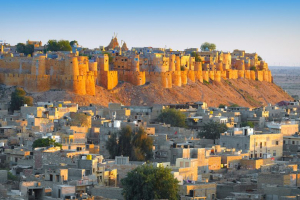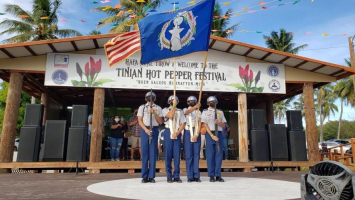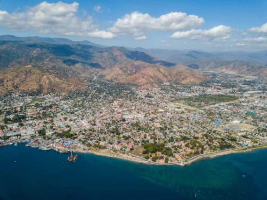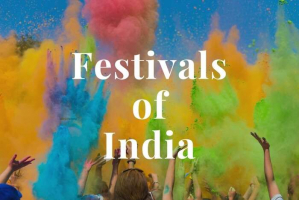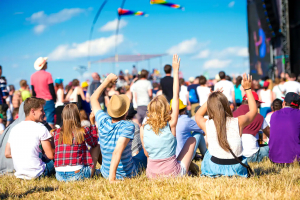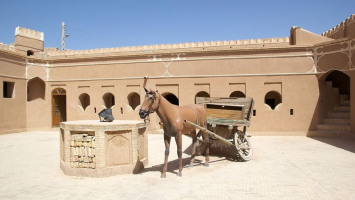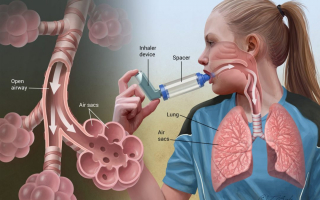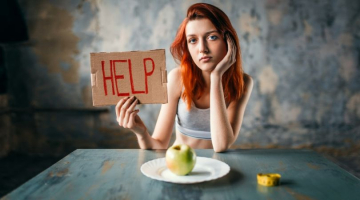Top 10 Best Fairs and Festivals of Rajasthan
Rajasthan boasts of its rich heritage, culture, and scenic splendors. And the same is reflected in sparkling lakes & desserts, vibrant markets, and mesmerizing ... read more...palaces & forts of Rajasthan. Undeniably, equally popular are the numerous colorful and traditional festivals of Rajasthan. Some reflect ethnicity, some heritage, and some are purely cultural events. These festivals are for sure a celebration of life, heritage, and culture in true Rajasthani style. Below are the best fairs and festivals in Rajasthan, let's find out!
-
Mewar Festival welcomes the spring season. Observed and celebrated throughout Rajasthan, it is treated with a lot of zest and camaraderie. Udaipur is the epicenter of this festival as Mewar rulers governed the state from Udaipur. So, this is the place to be to get the best experience at this festival. During this time, the city of Udaipur wears a different look. The whole city seems to be drenched in the colors of the fiesta. This is evident from how the shops and establishments in Udaipur decorate their external surroundings. Bright lights and decorative art are displayed in front of commercial establishments.
Another celebration in Rajasthan with significance for women is the Mewar Festival. Women dress to the nines and look their best during this time. Isar, a manifestation of Lord Shiva, is dressed up in this scene, which is one of the highlights. Gangaur (Parvati) is also attired. Then a large parade of these idols is made through the streets. The procession is headed for the Gangaur Ghat, which is situated at Pichola Lake.
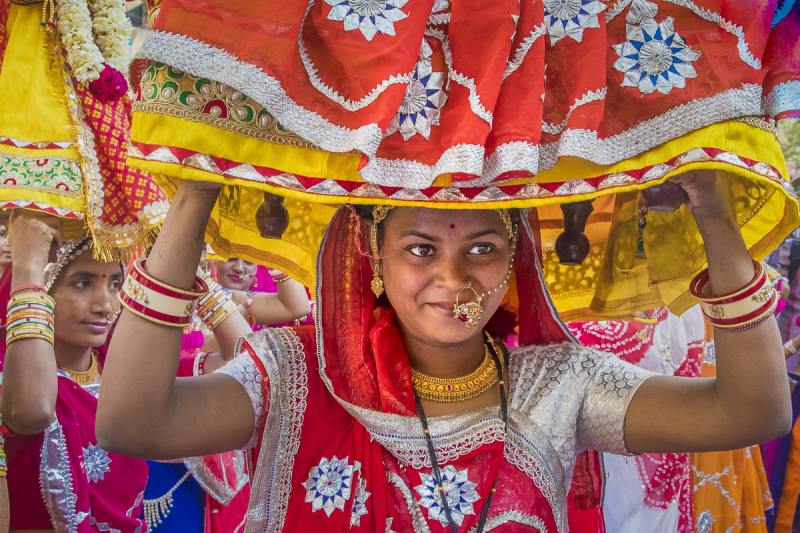
World Nomads 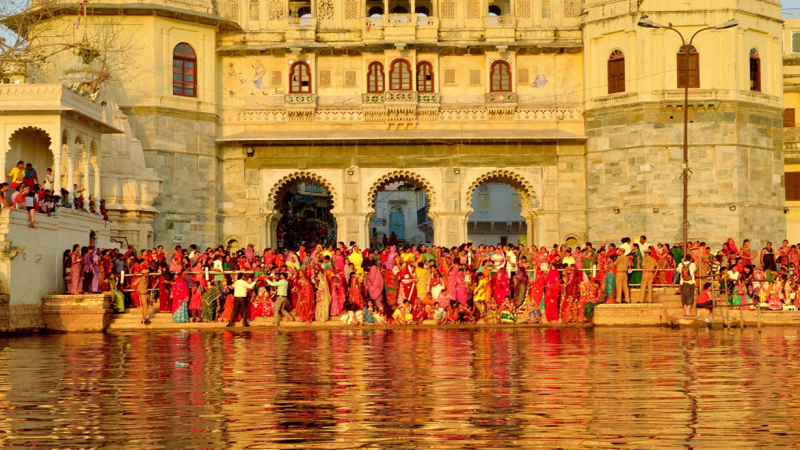
Tour My India -
Teej is celebrated during the monsoon season, between July and August. On this occasion, married women seek the blessings of Lord Shiva and Parvati for a happy marital life. In Rajasthan, the event comes before the monsoon. Given that many portions of Rajasthan are desert areas, it enjoys rainfall. The Teej Festival is also known as the Swing Festival. The swings, which are hung from trees, are ornately ornamented, particularly with flowers. The majority of the traditional clothing worn by women is green in color. It is one of the best fairs and festivals in Rajasthan when married women sing, dance, and implore the blessings of the Almighty.
These married women are also given gifts from their parents. Usually, they are items that women use to beautify themselves such as henna, vermillion, bangles, and bindi. Gifts include sweets as well with Ghevar, a special type of Rajasthani sweet being the most popular. Lahariya, a multicolored sari is another thing that is received by these women with glee. On this day of the festival, married women wear the sari and beautify themselves. Fairs and processions are conducted in honor of Goddess Teej – the incarnation of Parvati.
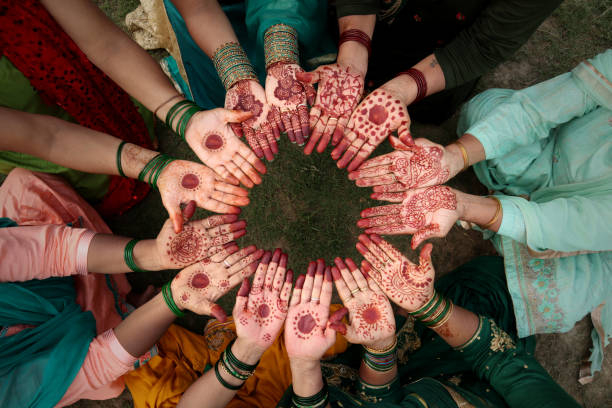
iStock 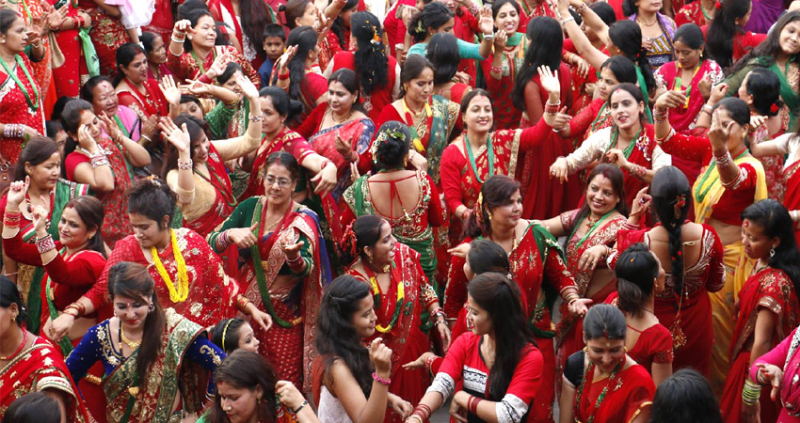
Above the Himalaya Trekking -
The Gangaur Festival is celebrated with much aplomb across Rajasthan. The word Gangaur is a combination of two words - Gan which is a synonym for Lord Shiva and Gaur which is used to refer to Goddess Parvati. This festival is held in commemoration of Goddess Parvati. The Goddess is revered and worshipped for possessing many qualities such as marital love, courage, strength, and power. Married women worship the deity for happiness and a long married life. They pray that their husbands continue to make wealth and provide for the family.
Rajasthan's Gangaur festivities are observed in March and April. This occurs in the month of Chaitra, which is the first month in the Hindu calendar. Married ladies practice fasting and only eat once each day. These women dress newly for the occasion, including jewelry. They apply henna on their palms and apply Mehandi to their feet. Women wear earthen pots on their heads during the festival's seventh day to carry the presents that they have received from elders. The ceremony lasts for almost ten days. The earthen pots are smashed on the last day. A procession takes place during this day starting from Zanani-Deodhi in Rajasthan and concluding at Talkatora.
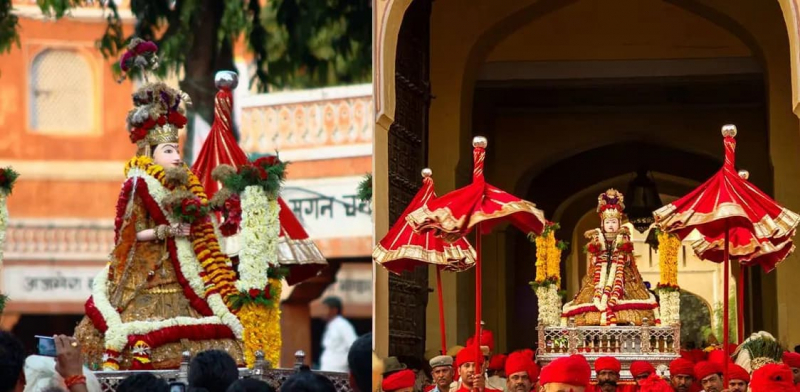
Jaipur Stuff 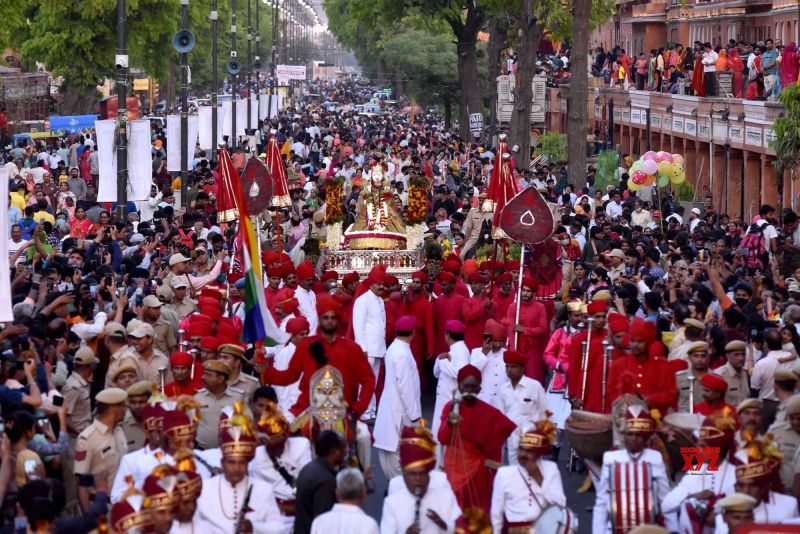
Social News XYZ -
The Elephant Festival is held every year during February and March in Jaipur and is among the prominent fairs and festivals of Jaipur. As is evident, elephants are the center of attention in the festival and are cleaned thoroughly, painted with bright colors, and draped in jewelry. Large anklets are placed on their gigantic feet. Their torsos are decorated with motifs and ornamental rugs are placed on their backs. The ears of these gigantic pachyderms are fitted with earrings. Their tusks are fitted with circular bracelets and rings made of silver. Mahouts manning these elephants are dressed to detail as well.
The Rajsthan festival offers the chance to observe lavishly decorated pachyderms. The festival is run by Rajasthan Tourism, and it takes place in the Jaipur Polo fields. In Indian civilization, elephants have always held a particular place. A renowned Indian god with an elephant head is called Lord Ganesha. Elephants have gained popularity in Rajasthani fairs mostly because of the appeal of Lord Ganesha.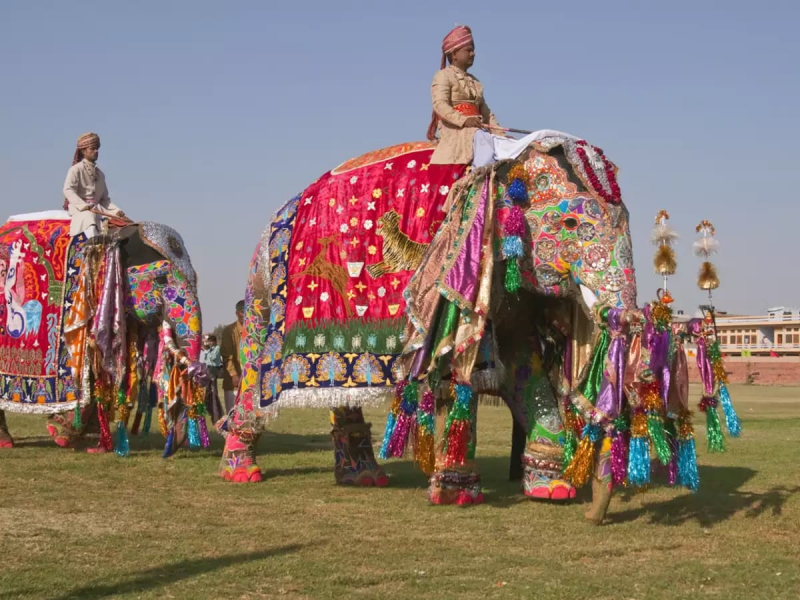
Times of India 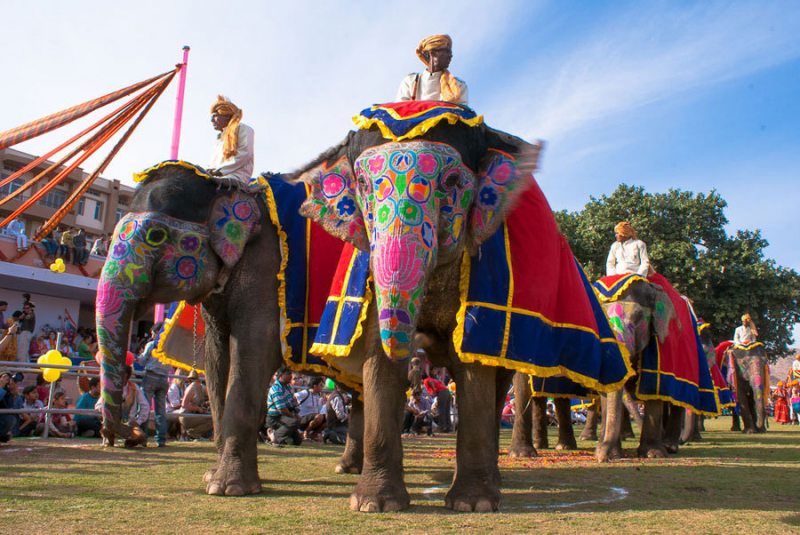
Orient Rail Journeys -
The Camel Festival is held in the traditional city, Bikaner, which incidentally is called the camel capital of the country. This land has the largest camel breeding farm in India. The festival attracts local, national, and international visitors. Given that Bikaner is a remote place in Rajasthan, any mention of the festival is correlated with the place. Thus, this single festival has increased the tourist influx in this city. As Bikaner is in the Thar Desert, camels have always been part of daily life. Therefore, the primary objective of this festival is to showcase the usefulness of this animal. Apart from that, the festivals of Rajasthan are an opportunity to display arts, crafts, tradition, and the heritage of the place and it is one of the amazing fairs and festivals of Rajasthan.
The festival lasts for two days in the month of January. There are numerous camel-related events scheduled at this time. Some of them include camel parades, races, tug-of-war, dance contests, and camel-dressing contests. The creatures are covered in embroidery on their clothing. Folk musicians and artisans perform during the festival, and attendees can purchase treats produced with camel milk. The Junagarh Fort is where the camel procession starts.
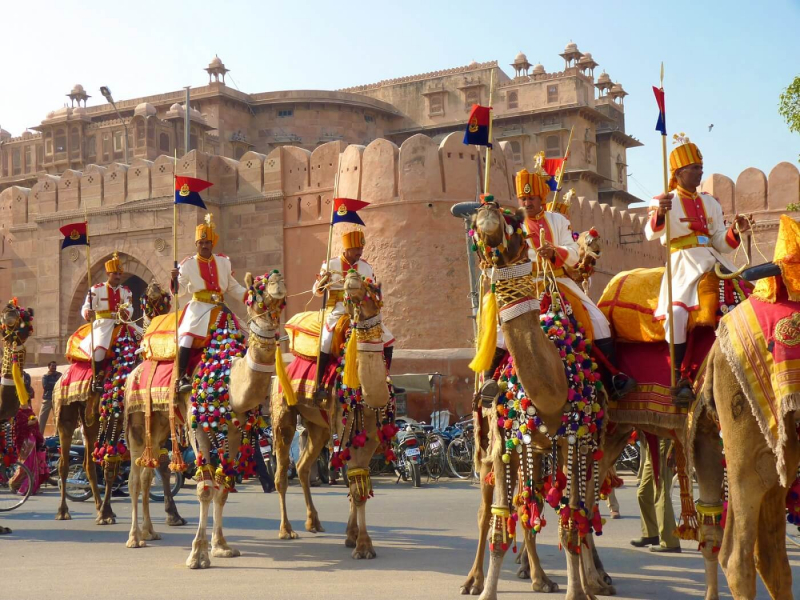
Travelogy India 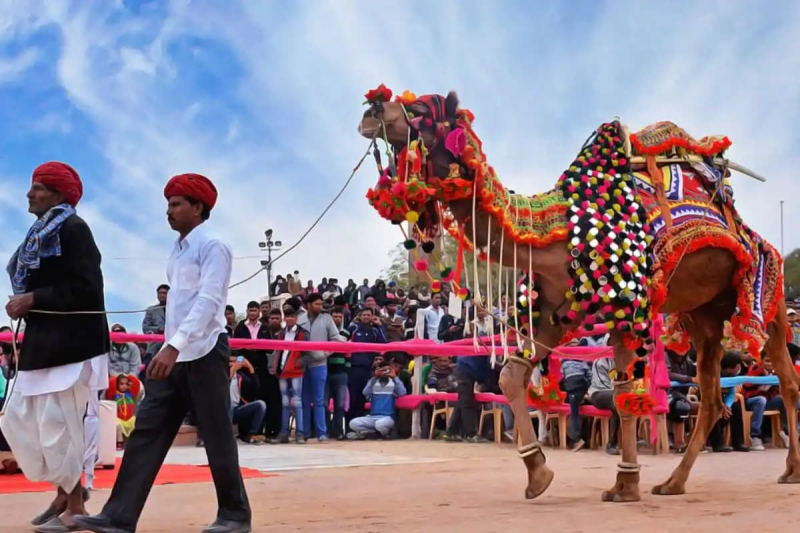
India.com -
The Dussehra Festival is held in Rajasthan, in the historical city of Kota. The city is located on the banks of the Chambal River. Kota is home to a large number of festivals and the Dussehra Festival is one among them. This occasion has an identity of its own as during this time, Kota wears a completely different look. Not only is Dussehra a joyous festival but it also holds a religious significance. The festival is celebrated to commemorate Lord Rama’s victory over the demon Ravana.
The Dussehra Festival in Kota offers guests a singular experience. The victory is portrayed in a theatrical manner. The comedy, which is done by actors, sheds light on events that, according to Hindu mythology, occurred many millions of years ago. Dramatic events lead to the skit's end. Ten enormous copies of Ravana's head are destroyed by fire. Fireworks and crackers are lit at the same time to commemorate the defeat of the demon. Everything is done extravagantly. It is a dramatic performance that, if seen for the first time, one will never forget.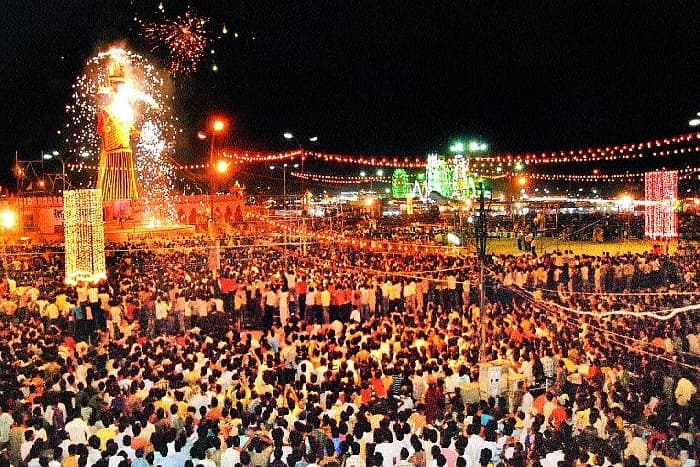
Since independence 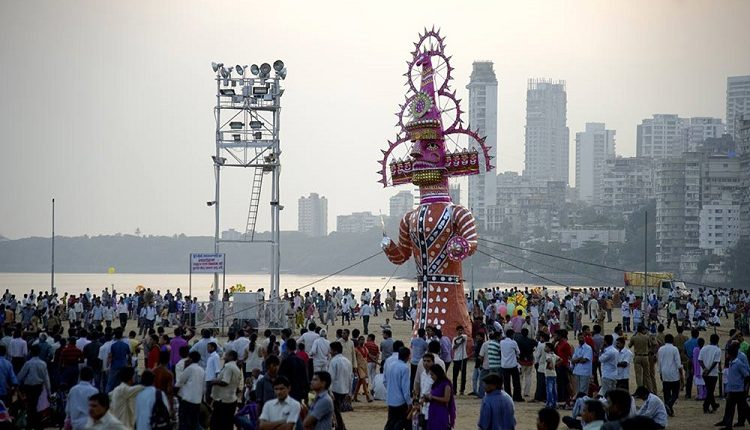
IndianHoliday.com -
Held in the month of February, the city of Jaisalmer is colored with the hues of festivity. This is the time when the Desert Festival is held. This festival is about camel races, competitions involving turban typing, and a host of cultural extravaganzas. It is here that the best-mustached man is chosen! Everything is unique and exotic about the Desert Festival of Jaisalmer. You celebrate the festivities amidst the vast and sunburnt sands of the Thar Desert. You sit on a sea of golden sand as you enjoy the cultural music and dance and merry-making under the moonlit sky.
This three-day event was initially created for visitors from other countries. Rajasthan's numerous features and cultural settings are crammed into this three-day itinerary. Folk singers and dancers from Rajasthan captivate the audience with their unadulterated art. The top singers and dancers can be seen exhibiting their incredible talent on the dance floor. The competition for mustaches is the most well-liked activity. Everyone is free to select their preferred dude with a mustache. Later, individuals can be seen posing for photos next to these mustachioed men.
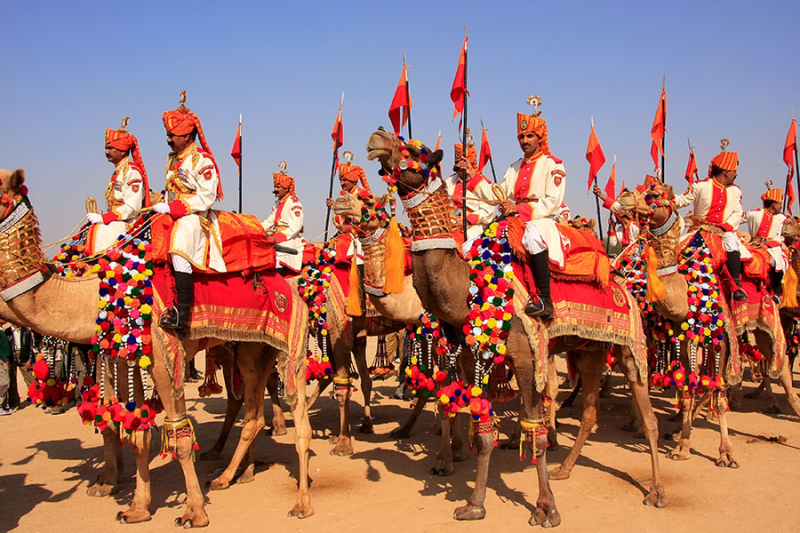
Conscious Journeys 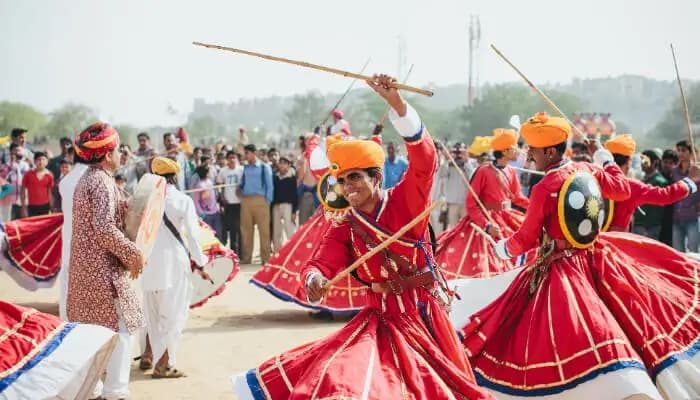
Travel Triangle -
Mount Abu is a hill station. One of Rajasthan's most distinctive fairs and festivals, the Summer Festival, takes place here in the month of May. The event begins on the day of Buddha Poornima and lasts for three days. Ballad singing is a part of the complex process that kicks off the fiesta. A parade of vivid colors and lights follows this. Following this, local folk dancers and musicians perform for the audience. There are many musical performances that captivate everyone. The Sham-e-Qawwali is a late-day performance including some of the top Qawwali singers.
Close by, Nakki Lake hosts numerous boat races. There are horse racing events conducted as well. Organized by the Rajasthan Tourism Department, the Summer Festival attracts thousands of tourists. The highlight of the festival is the performances by the Daph and Ghoomar artists. On the third day, the festival concludes with a bang. There are colorful fireworks and pyrotechnics held to mark the end of the festival. The gorgeous landscape of Mount Abu makes the event enchanting and the combination of lakes and verdant hills makes for a delightful festival experience.
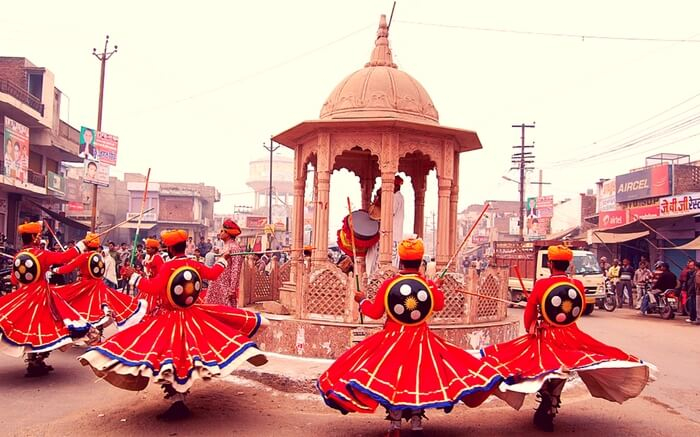
Travel Triangle 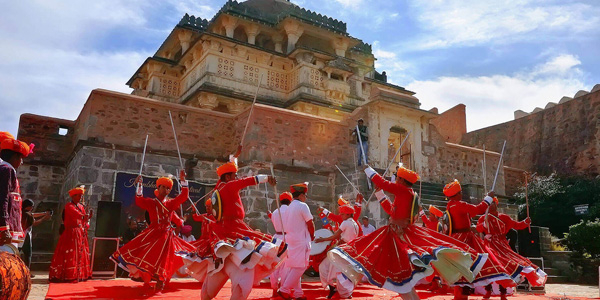
India Tours -
Celebrated in the month of January, the Kite Festival of Jaipur is one of the most unique fairs and festivals in Rajasthan. The festival is all about flying kites and thousands of colorful kites dot the skies during this time. The occasion is popular in Jaipur and Jodhpur. Kites with lights that light up the sky during the night are flown. They seem like celestial birds that have descended onto the Earth. This festival in Rajasthan attracts thousands of kite lovers. For those who enjoy flying kites and are passionate about it, this is the Mecca of it all.
The international Kite Festival in Jaipur has a long-standing history. The custom of flying kites is associated with Makar Sankranti. People celebrate the blessed day by flying kites from their rooftops. Kite-flying competitions are also organized at this festival. People fly kites on Makar Sankranti because they receive the benefits of sun exposure. During winter, our body gets infected and suffers from cough and cold, and the skin also gets dry during this season. When Sun moves in Uttarayana, its rays act as medicine for the body. During kite flying, the human body is continuously exposed to sun rays, eradicating most infections and insanitation.
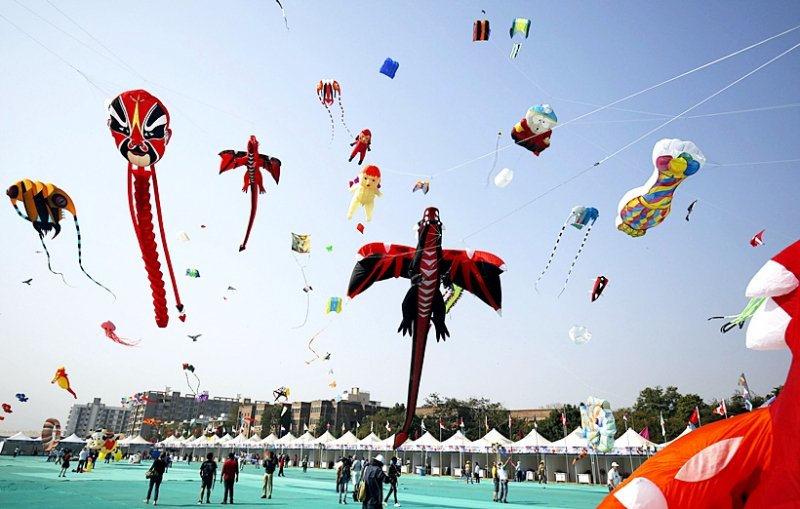
Savaari Blog 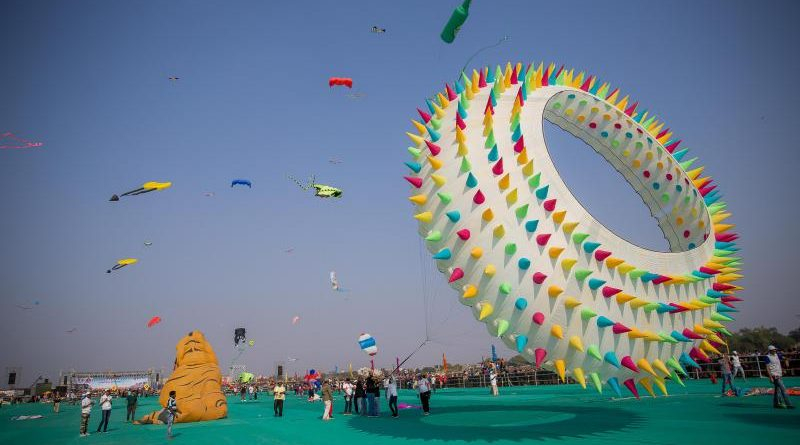
Townmumbai.com -
The Pushkar Fair is one of the main attractions of Ajmer. This five-day annual cattle and livestock fair attracts a large number of tourists from all over the country and the world. Apart from the trade of camels and livestock, a number of interesting competitions such as Matka Fod, Longest Moustache, and Bridal Competition are held here. The Pushkar Camel Fair is one of the largest camel fairs in the world. As per the Imperial Gazetteer of India, as many as 1,00,000 pilgrims participated in the fair in the 1900s. To attract more tourists, the state tourism department has also introduced a friendly cricket match between the local club members and random tourists and this is one of the best places to see in Rajasthan.
However, the main attraction of the Pushkar Camel Fair is the competition of camels. Camels are decked in jewelry and rallied to the grounds. The camels participate in a number of competitions such as camel dance, tug of war, camel races, and many others. These activities, in particular, are extremely popular with tourists. The Pushkar Camel Fair is undoubtedly one the most unique and must-visit.
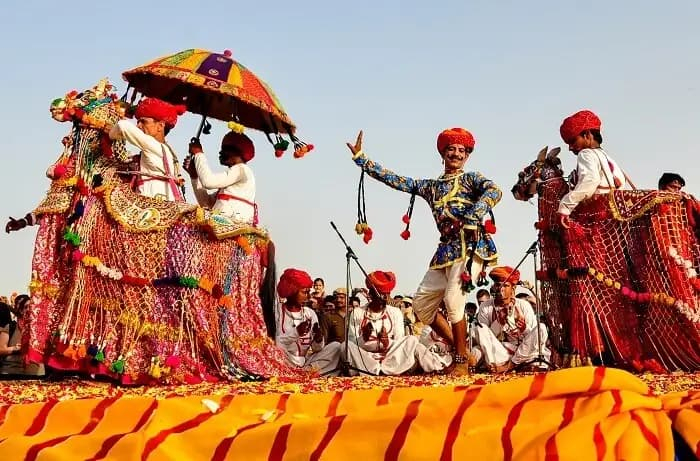
Travel Triangle 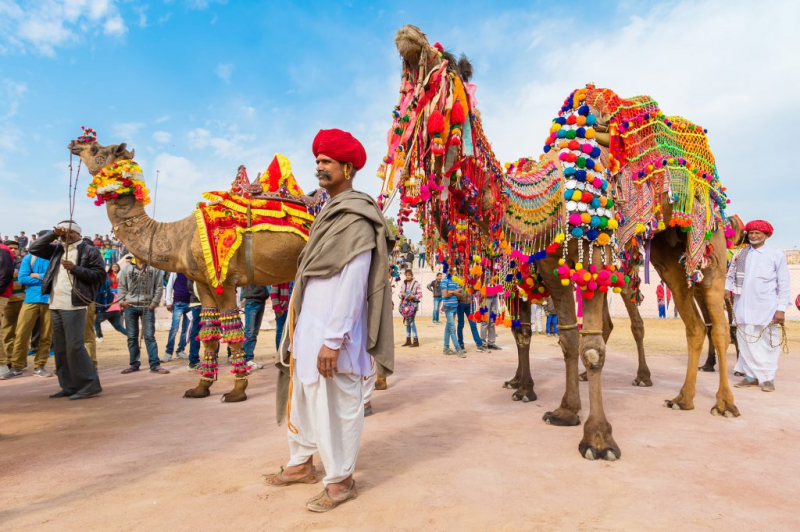
Travel Rajasthan












